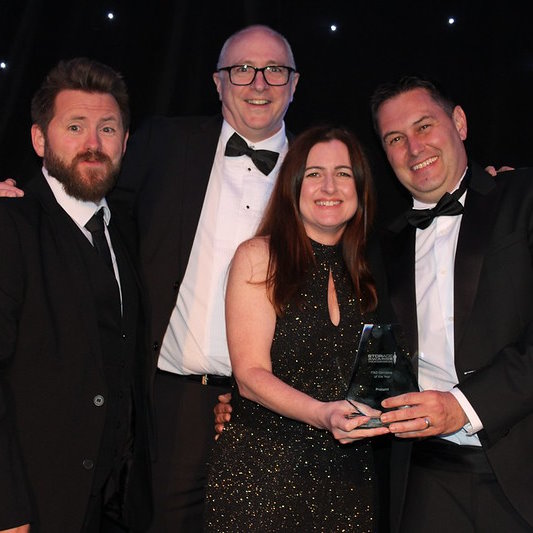Procurri is a leading ITAD (IT Asset Disposition) provider worldwide, but unlike many we don’t necessarily focus on just disposal; rather, prioritizing recycling and reuse wherever possible. Laptops are just one device type we work with, and here we talk through how this works.
What is e-waste?
E-waste is discarded electrical equipment or electronic devices, usually disposed of because they’re no longer required, malfunctioning, or have reached the end of their life. Unlike other waste streams, e-waste is difficult to manage so that’s it not harmful to the environment – and this makes it an issue, as it often isn’t disposed of correctly (both knowingly and inadvertently).
E-waste is the largest growing waste stream worldwide, largely down to society’s increasing reliance on technology. An exact figure isn’t available, but it’s estimated that some 62 million tonnes of e-waste was generated in 2022. Of all of this, only 22.3% of e-waste is formally collected and recycled, with the other 77.7% reaching landfill. As of right now, it’s believed that there’s around 350 million tonnes of unrecycled e-waste on Earth.
Why isn’t more e-waste recycled?
The nature of e-waste is that it’s often made up on multiple components comprised of several different materials. This includes valuable materials like gold, silver and copper (which indeed often end up in landfill as a result of improper ITAD practices), but also some that are harmful, toxic, and difficult to process such as mercury and lead.
As a rapidly growing waste stream, businesses have been set up worldwide to take on ITAD. However, with regulations and legalities varying between countries and territories, those with impure intentions are taking e-waste and either disposing of improperly or sending it internationally to somewhere it can be processed cheaply and with less due diligence. This contributes vastly to environmental damage in some areas of the world that are already struggling.
Furthermore, it’s worth noting that ITAD simply isn’t taken seriously by many businesses. As an expenditure, budgets often don’t stretch far as the hardware being disposed of is already considered a burden and will no longer contribute to the company’s operations.
For more information on cost-effective ITAD practices that are sustainable enough to be zero-to-landfill, get in touch with the Procurri team.
What parts of laptops can be recycled?
While of course different manufacturers vary the construction of their laptops somewhat, there are lots of materials commonly used in them that can be recovered and used again. These include:
- Aluminium
- Boron
- Cobalt
- Copper
- Gold
- Hafnium
- Iron
- Nickel
- Palladium
- Plastic
- Silicon
- Silver
While all of these materials can be recycled, these components can be harmful to both people and the environment. As such, their extraction and recycling must be done with precision and care. When not recycled, these materials are sent to landfill to deteriorate and break down. This causes extensive environmental damage as the materials leach into soil and groundwater. Any humans that later come into contact with this can find it physically harmful – and in some cases, even fatal.
How does laptop recycling work?
ITAD is a multi-stage process and laptops in particular are subject to lots of checks and dismantlement as they have so many components within.
Laptop Recycling Step #1: Collection
Procurri collects on-site IT hardware from their customers. This allows us to ensure that everything is transported in secure vans to maintain data integrity and security.
Laptop Recycling Step #2: Inspection and sorting
Every unit is individually inspected and labelled to allow it to be tracked throughout the ITAD process. The condition is noted, and then items are sorted by this – prioritizing the processing of hardware pieces that can be refurbished or recycled.
Laptop Recycling Step #3: Data Destruction
Laptops, and all other data-bearing IT hardware is subject to data wiping to either cleanse or destroy the data held within. This can be done in a variety of different ways dependent on the hardware; including physical crushing and shredding, degaussing and sanitizing.
Our ITAD processes adhere to strict industry standards and regulations, guaranteeing secure data erasure and disposal in an environmentally responsible manner.
Laptop Recycling Step #4: Dismantle
Once data has been thoroughly removed, the hardware can be taken apart and split into separate materials and components (unless it can be simply re-programmed and resold). This can be done by hand or machine, dependent on the device. At this point, we are able to determine exactly which parts of the laptop can be recycled.
Laptop Recycling Step #5: Recovery of components
Parts are sorted into categories for reuse, recycling or further processing. Working parts may be tested and then reused or resold. Hazardous components must be handled according to strict safety protocols.
Laptop Recycling Step #6: Material separation
The remaining materials are separated using methods such as magnetic separation, eddy current separation, and water-based separation extract. Magnets are used to extract metal, and water is used to sort plastic and glass (as the former floats, and the latter sinks).
Laptop Recycling Step #7: Processing
At this point, recovered materials are sent to specialized facilities for their final processing. This includes smelting for metals, purification processes for glass and polymer processing for plastics.
Laptop Recycling Step #8: Reuse!
Finally, the workable parts of the laptop are recycled and reused, and can be sold on.
How can I be sure the data is wiped properly from my laptop when it’s recycled?
Data destruction is a specialized field, and highly legislated – as data leaks and breaches are illegal and hold vast financial, reputational and security penalties for any businesses that experience them.
At Procurri, we prioritize data destruction. All IT assets are securely transported to our unmarked and highly guarded facilities, quarantined under CCTV and only released from this area upon sanitation being complete. This area is only open to Procurri personnel with the highest possible clearance. Procurri’s data erasure services include accreditation over and beyond the following standards:
- ADISA (Asset Disposal and information Security Alliance)
- NIST (National Institute of Standards and Technology)
- DoD (US Department of Defence Data)
- NAID AAA (National Association for Information Destruction AAA Standard)
- HMG Infosec 5 (UK His Majesty’s Government Infosec Standard 5).
What are the alternatives to laptop recycling?
For businesses looking to dispose of laptops no longer required, it is always recommended that they work with a specialist ITAD partner to process their e-waste properly and derive any residual value from the hardware. For individuals looking to dispose of laptops no longer required, they may choose to donate or resell their devices themselves.
Reuse
Businesses may choose to use a laptop as a Linux machine or reuse as a security monitor. If still functional, it may also be kept as a back-up computer for business continuity purposes.
Refurbishment
Laptops can be upgraded rather than replaced through the use of additional RAM, a new battery or new SSD. Professional refurbishment companies also exist who can take on this processing.
Donation
Providing sufficient data destruction has been enacted, businesses may chose to donate laptops they no longer require to charities, schools or digital inclusion programs.
Trade-in Programs
Some OEMs offer trade-in programs for credit against new purchases. This doesn’t necessarily mean that the laptop will be reused or resold though; it may still end up being recycled.
How can laptop recycling create an income stream for my business?
At Procurri, we operate as a Carbon Neutral business so always focus on recycling, refurbishment, and reuse wherever possible. Our data destruction suite is so comprehensive and our ITAD processing facilities so advanced that we’re able to function on a zero-to-landfill basis.
As the owner of the IT channel’s largest spare parts inventory in the world, Procurri has the perfect place to remarket and resell full devices and components of them. As such, we’re able to offer optimized returns and leverage our extensive network to reward customers financially where we’re able to recover materials. We even pay before they’re actually sold, as we’re so confident they will be!
The Procurri approach presents an opportunity for businesses to earn an income stream for something that they otherwise may have not considered before; and in turn, helps to stock our hardware supply network. This allows us to work with our customers at every single step of their IT hardware lifecycle.
Want to learn more on our ITAD and recycling practices? Get in touch with the Procurri team today!





